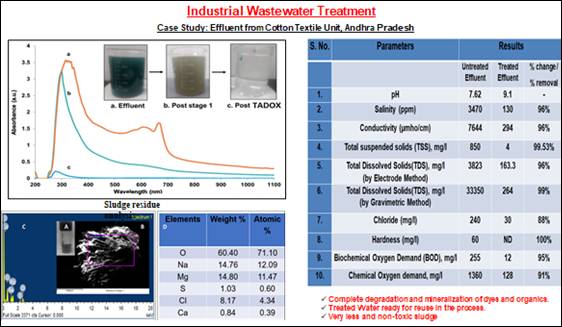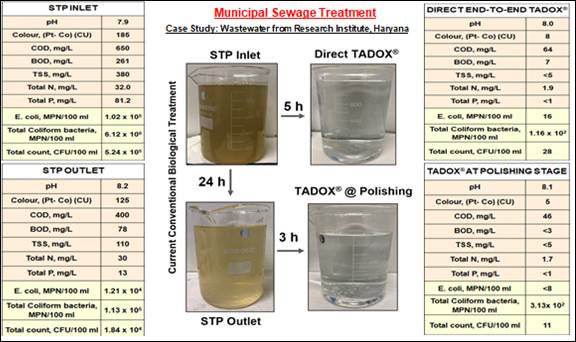
New Delhi: A new technology may soon enhance the reuse of waste water in an affordable and sustainable manner. The city based Energy and Resources Institute (TERI), has developed a technology called ‘The Advanced Oxidation Technology or TADOX®’ which it claims can reduce less dependence and load on biological and tertiary treatment systems and help achieve Zero Liquid Discharge (ZLD).
“It can bring down capital expenditure on ZLD by 25-30% and operating expense by 30-40% for industrial wastewater treatment,” it stated today.
The technology which uses UV-Photocatalysis can treat municipal sewage and highly polluting industrial wastewater streams and increase its reuse as a technological option in industrial as well as municipal wastewater treatments.
The technology supported by the Water Technology Initiative (WTI) of the Department of Science and Technology, Government of India involves UV-Photocatalysis as an Advanced Oxidation Process (AOP) at the secondary treatment stage leading to oxidative degradation and mineralization of targeted pollutants. It improves biodegradability, thereby preventing bio-fouling of membranes and enhancing life span and efficiency of RO systems as also overall load on evaporators like Multiple Effect Evaporators and Mechanical vapor recompression (MVR), and so on. It can reduce Chemical Oxygen Demand (COD), Biological Oxygen Demand (BOD), dissolved organics, pathogens, Persistent Organic Pollutants (POPs), and Micropollutants.


TADOX® could be integrated and retrofittable in existing treatment systems making it a viable option as a novel Decentralized Wastewater Treatment Technology (DWTT) applicable in upcoming and existing infrastructural projects, townships, commercial complexes, green buildings, and smart cities.
The technology has been adopted by an MSME Company to scale up to 10 Kilo Litre per Day continuous running plant in TERI Gurugram campus. TADOX® technology has been chosen for pilot trials and augmentation plan for identified industrial sectors under ‘Namami Gange’ Programme of the Ministry of Jal Shakti. The Technology is at TRL 7 and ready for commercialization, it said.
It may be mentioned that with ever-increasing water crisis, it becomes imperative for industries and utilities to reuse ‘treated water’. However, the current treatment practices are inefficient because of high dependence on biological treatment systems, which are unable to bear shock loads. This is followed by tertiary treatment systems involving RO and Multi Effect Evaporators (MEE). These systems have large carbon footprint and maintenance costs making the wastewater treatment highly unsustainable and unaffordable. Thus researchers have felt the need to integrate novel approaches and advanced technologies in current systems.
– global bihari bureau





